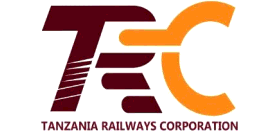 Burundi and Tanzania Launch Uvinza–Musongati SGR to Transform Regional Logistics and Trade
Burundi and Tanzania Launch Uvinza–Musongati SGR to Transform Regional Logistics and Trade
A major step toward East Africa’s economic integration was marked on August 16, 2025, when the President of Burundi, H.E. Évariste Ndayishimiye, and the Prime Minister of Tanzania, H.E. Kassim Majaliwa, jointly laid the foundation stone for the transformative Uvinza–Musongati Standard Gauge Railway (SGR) section. The ceremony, held in Musongati, Rutana Province, Burundi, drew national pride and international attention as leaders heralded the project’s potential to accelerate growth, fortify diplomatic ties, and establish a new logistical lifeline between the two countries.
This bold infrastructure initiative will directly link Burundi and Tanzania via modern rail, strengthening both political and economic bonds in the region. The SGR line is set to connect Musongati in Burundi with Uvinza in Tanzania, providing a vital corridor that will ultimately enhance access to the Port of Dar es Salaam—a strategic gateway for East and Central Africa’s imports and exports. The project is designed to bolster the transport and logistics sector, with knock-on effects expected across trade, industry, and regional cooperation.
During the foundation ceremony, President Ndayishimiye described the moment as “historic,” noting the visible joy among Burundians as the country positions itself for a new era of development. “Burundi has now decided to take a step forward by developing the transport sector, which will stimulate growth and strengthen the economy,” he declared, underlining the SGR’s role in catalyzing national and cross-border prosperity. The president emphasized his deep belief in Tanzanian–Burundian unity, anticipating that the railway would foster even closer collaboration between the two nations.
Prime Minister Majaliwa echoed these sentiments, commending both governments for their strategic vision. He stressed that the SGR represents a foundational investment that will “boost the economies of both countries,” solidifying their partnership and paving the way for broader regional integration. Majaliwa outlined the scope of the project: the SGR section will stretch 300 kilometers in total, including 240 kilometers of main railway line and 60 kilometers of passing loops. Construction is projected to last 72 months, generating approximately 5,000 direct jobs and significant indirect employment through local supply chains and services.
The economic implications of the Uvinza–Musongati SGR are substantial. According to Tanzania’s Minister for Transport, Professor Makame Mbarawa, the railway will dramatically reduce freight transport costs between the Port of Dar es Salaam and Burundi. Shipping a 20-foot container will drop from USD 3,800 to USD 2,000 upon completion—a nearly 50% reduction. This cost efficiency is expected to make Burundian exports more competitive, stimulate investment, and improve access to international markets for local enterprises.
Furthermore, the SGR will introduce bulk transport capabilities that far exceed the capacity of the current road-based logistics model. Where one lorry can carry only about 30 tonnes, the new rail line will enable the movement of up to 3,800 tonnes in a single consignment. This leap in capacity is set to transform how raw materials, agricultural goods, and manufactured products are transported within the region, reducing congestion on roads and lowering carbon emissions associated with heavy trucking.
The Uvinza–Musongati SGR is emblematic of a broader continental agenda: African nations are prioritizing reliable, modern infrastructure as the backbone for regional connectivity and development. Rail projects like this one are seen as critical to unlocking Africa’s economic potential, facilitating intra-African trade, and supporting the goals of the African Continental Free Trade Area (AfCFTA). By investing in cross-border rail, Tanzania and Burundi are not only advancing their own economic interests but also contributing to the vision of a more integrated, prosperous Africa.
For the African travel and logistics sectors, this landmark project signals new opportunities and a changing business landscape. The SGR will likely spur demand for supporting services, from warehousing and distribution to passenger rail travel, tourism, and infrastructure investment. It also offers African travel professionals a compelling story of transformation, one that showcases the continent’s commitment to overcoming logistical challenges through innovation and partnership.
As the Uvinza–Musongati SGR breaks ground, the region stands on the threshold of a new era. With construction underway, local communities anticipate not only immediate job creation but also longer-term benefits in skills development, technology transfer, and economic diversification. For the travel trade, these advances will open up fresh routes, new products, and untapped markets as Africa’s connectivity revolution gathers pace.
The foundation of the Uvinza–Musongati Standard Gauge Railway is more than a milestone for Burundi and Tanzania—it is a beacon of progress for the whole of sub-Saharan Africa, setting the stage for future infrastructure partnerships and a more interconnected continent.
